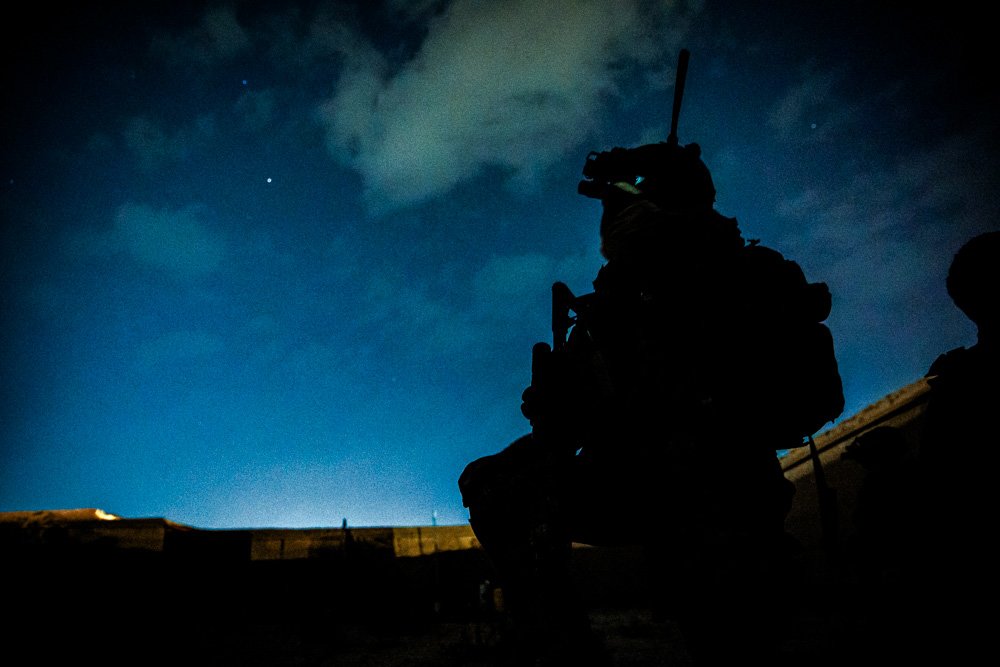
A US special operations forces member conducts combat operations in support of Operation Resolute Support in northeast Afghanistan, April 2019. US Army photo by Spc. Jonathan Bryson.
As if special operations and operators weren’t cool enough, SOCOM also gets the coolest name in the Department of Defense. How is INDOPACOM supposed to compete with a name like that? How is TRANSCOM supposed to hype its mission to sound SOCOM-level cool? What’s so special about special operations, anyway?
If your experience with special operations is logging hundreds of hours of playing SOCOM: U.S. Navy SEALs, you might not understand how special ops come together. The alphabet soup of special operations commands probably doesn’t help. Knowing the difference between JSOC and SOCOM is just the beginning.
Many moving parts make up SOCOM, and each branch with special operations forces plays a role. At this point, some of you may be wondering what these words mean. If they don’t make sense right now, I’m about to make their meaning clearer. By the end of this piece, even the most civilian reader will have a firm grasp of all the SOCs.

Special Warfare Combatant-craft Crewmen from Special Boat Team 12, stationed at Naval Base Coronado, California, with the help of aviators from 4th Battalion, 160th Special Operations Aviation Regiment, stationed at Joint Base Lewis-McChord, Washington, conduct a Maritime External Air Transportation System training evolution in Moses Lake, Washington, May 21, 2014. US Army photo by Sgt. Christopher Prows.
SOCOM is the abbreviation for the US Special Operations Command, which brings together and oversees American special operations forces and missions. SOCOM was formed after the United States learned some tough lessons about special operations in the hardest way imaginable. Since then, every special ops mission you’ve heard about — as well as those you haven’t — has been brought to you (and the enemy) by SOCOM.
SOCOM Stands For Special Operations Command
SOCOM’s full name is USSOCOM, but simply saying “SOCOM” is faster, easier, and obviously way cooler. Its job as a unified command is to bring together the special operations units from each military branch and ensure interoperability when and where necessary.
Unified combatant commands are specialized collections of US military units brought together under a single four-star commander for effective command and control. These unified commands are based on geographic regions, or “areas of responsibility,” such as AFRICOM (Africa Command) and CENTCOM (Central Command). They are also based on functions, such as CYBERCOM (Cyber Command).
SOCOM is a functional combatant command, housing all special operations in the US military, regardless of branch affiliation. It includes nearly 70,000 active-duty, Reserve, and National Guard soldiers, sailors, airmen, Marines, and Defense Department civilians.
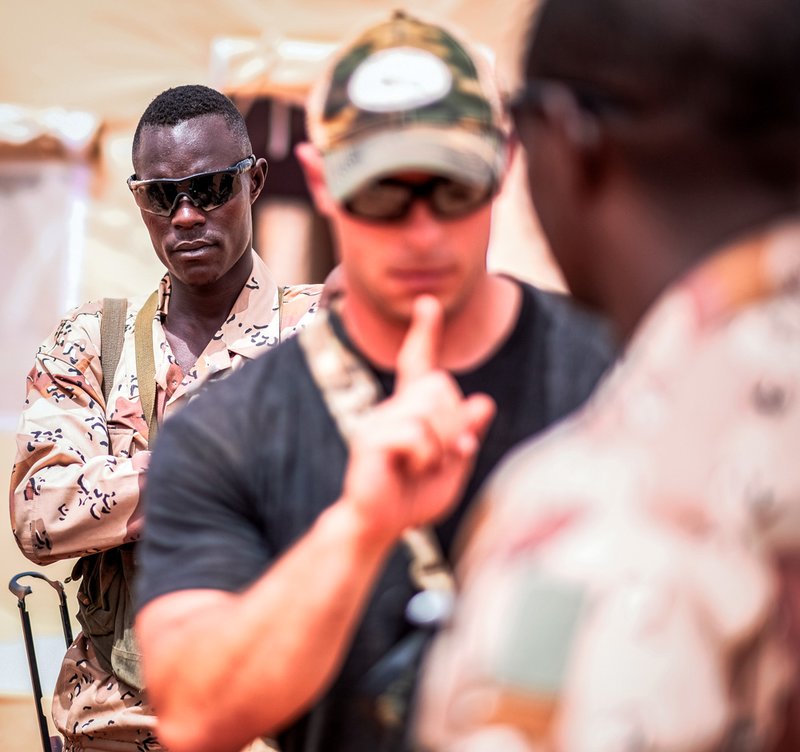
Forces Armées Nigeriennes soldiers conduct close-quarters combat training with US Special Forces advisors during Flintlock 2018, April 13, 2018, in Agadez, Niger. US Army photo by Staff Sgt. Daniel Love
Responsibilities under SOCOM’s purview include developing special operations forces (SOF) strategy, doctrine, and tactics. It prepares its own budgets and training, prioritizes requirements, maintains readiness and intelligence support, develops and acquires equipment, and ensures interoperability.
On top of training and equipping all American special operations forces, SOCOM synchronizes the Department of Defense planning against international terrorist networks. Once the plans are in place, SOCOM also conducts required special operations against those networks.
The History of SOCOM
While SOCOM is not the newest unified command, it’s still relatively young. In 1980, a team of the US Army’s Delta Force and Army Rangers, with assistance from the Air Force, Navy, and Marine Corps, launched a special operations mission to rescue American hostages in Iran. The mission, called Operation Eagle Claw, resulted in the deaths of eight service members. It also led to calls for a reorganization of special operations forces in the US military.
The Army managed to consolidate its special operators by 1982, creating the new 1st Special Operations Command. That agency housed Special Forces, Special Operations Aviation, Rangers, PsyOps, and Civil Affairs. Other branches lagged behind, and interoperability remained lacking, which became apparent during Operation Urgent Fury, the 1983 invasion of Grenada.
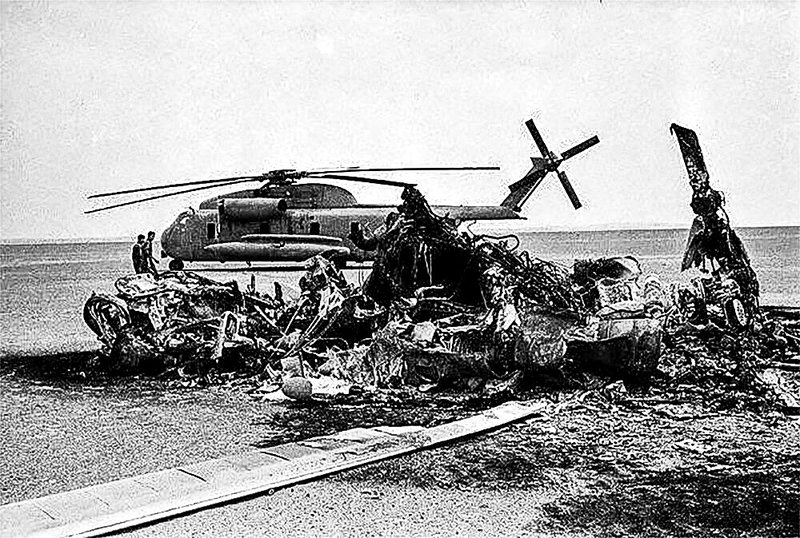
Wreckage of a destroyed Bluebeard helicopter with an abandoned RH-53D behind. Photo courtesy of Bahram Mohammadifard.
In Grenada, command and control suffered from a lack of coordination. Navy planners lacked ground and air expertise, and, as a result, Marine Corps operations and Army Ranger operations were uncoordinated and lacked unified air support. The lack of interoperability in communications made the situation worse.
The 1986 Goldwater-Nichols Act restructured the Armed Forces to flow command from the president of the United States and secretary of defense to unified combatant commanders. It took the Joint Chiefs of Staff out of the command structure, leaving the individual service branches to train and equip troops under a four-star combatant commander.
Since unified combatant commands are based on geography and function, SOCOM was designed to bring special operations functions together. The US Special Operations Command was created immediately following the Goldwater-Nichols Act because SOF were often misused by conventional commanders during Urgent Fury, which led to unnecessary special operations casualties. Now all special operations units in the military would be unified under SOCOM.

Navy SEALs demonstrate winter warfare capabilities. Naval Special Warfare Command photo.
SOCOM’s first operation came in 1987 and was the result of Iranian attacks on shipping through the Strait of Hormuz during the Iran-Iraq War. The Army’s 160th Special Operations Aviation Regiment (Airborne), Navy SEALs, and Special Boat Teams attacked Iranian minelayers, frigates, and oil platforms in the Persian Gulf, often in the dark of night. When the USS Samuel B. Roberts hit an Iranian mine, conventional forces responded alongside SOF, proving the new structure’s viability.
SOCOM Is Not a Branch of the Military
Civilians know the US military is separated into branches of service, but the hierarchy of the US military is both simpler and more complex than that. Prior to the aforementioned Goldwater-Nichols restructuring, individual branches of the military answered to their respective service chiefs on the Joint Chiefs of Staff, but that structure became increasingly inefficient during the Cold War.
When the Joint Chiefs became an advisory body to the president and the secretary of defense, unified combatant commands took over as the highest operational echelon of US military commands.
Those bodies are composed of joint forces from units of all military branches. SOCOM is headquartered at MacDill Air Force Base, and it comprises all SOF from every branch of service, including Naval Special Warfare Command, Air Force Special Operations Command, and Army Special Operations Command.
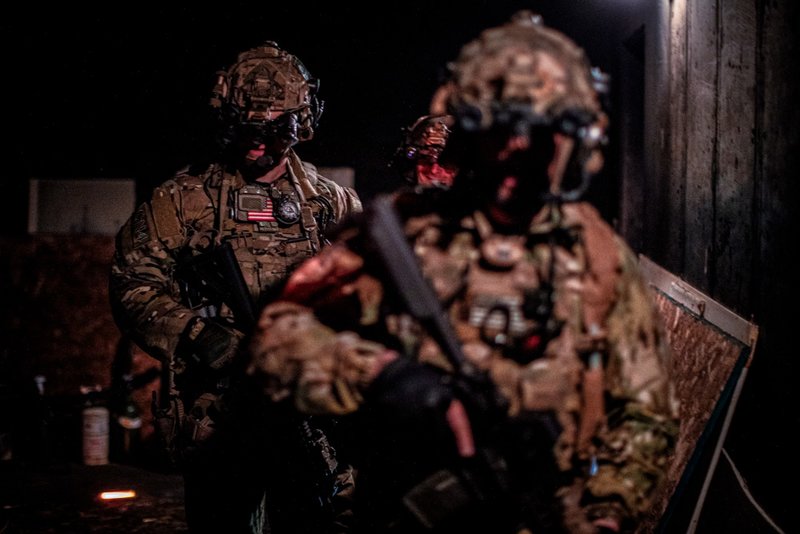
US Army Special Forces raid a mock hostile compound under the cover of darkness during a training exercise in Boston, Massachusetts, April 28, 2021. USSF, known by many as the Green Berets, are among the most elite soldiers in the US military and specialize in unconventional warfare tactics, foreign internal defense, special reconnaissance, direct action, and counterterrorism. US Army photo by Sgt. 1st Class Justin P. Morelli.
The structure of orders coming from the White House to unified combatant commands applies only to military operations. In all other nonoperational areas, the chain of command goes through the individual branch secretaries and their respective service chiefs.
The effectiveness of the new operational hierarchy became immediately apparent in 1989 during Operation Just Cause, the US invasion of Panama. While conventional military forces captured key objectives throughout the country, SOCOM-directed forces concurrently conducted a series of special operations that disrupted enemy defenses.
As the first shots of Just Cause were fired, a team of Delta Force soldiers raided the notorious Carcel Modelo prison to free Kurt Muse, an American convicted of espionage. Meanwhile, Navy SEALs destroyed dictator Manuel Noriega’s means of escape as a joint SEAL-Delta Force mission forced Noriega to flee to the Embassy of the Holy See in Panama City.
JSOC Is Part of SOCOM
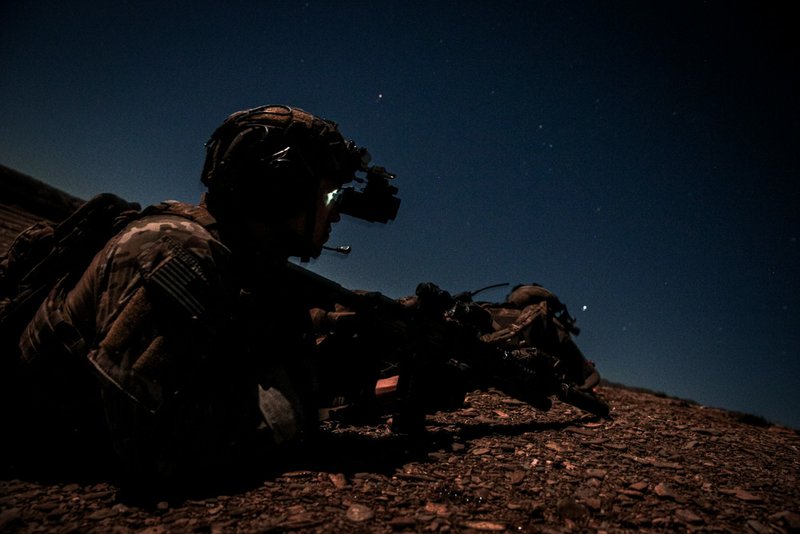
A US special operations forces member conducts combat operations supporting Operation Resolute Support in east Afghanistan, April 2019. US Army photo by Spc. Jonathan Bryson.
Many confuse Joint Special Operations Command (JSOC) with SOCOM. JSOC is a component command of SOCOM, tasked with creating standardization between branches to ensure interoperability. This organization is also responsible for studying special operations requirements and techniques to develop tactics and training. Its ultimate goal is the smooth execution of SOF operations.
JSOC also oversees Tier One Special Mission Units, which are also part of SOCOM. These include (but aren’t necessarily limited to) the Army’s 1st Special Forces Operational Detachment-Delta, the Naval Special Warfare Development Group (DEVGRU — also known as SEAL Team 6), the Air Force’s 24th Special Tactics Squadron, and the Army Intelligence Support Activity. They are called Task Force Green, Task Force Blue, Task Force White, and Task Force Orange, respectively.
JSOC task forces also maintain a close relationship with the Central Intelligence Agency’s Special Activities Center, which specializes in covert action and paramilitary operations that would fall under the mission of JSOC if they were official military operations.
Read Next: ‘The Only Easy Day Was Yesterday’ — The Legendary Navy SEALs

Randall Stevens is a military veteran with more degrees than he knows what to do with. He enjoys writing and traveling, and has an unnatural obsession with Harry Houdini.
BRCC and Bad Moon Print Press team up for an exclusive, limited-edition T-shirt design!
BRCC partners with Team Room Design for an exclusive T-shirt release!
Thirty Seconds Out has partnered with BRCC for an exclusive shirt design invoking the God of Winter.
Lucas O'Hara of Grizzly Forge has teamed up with BRCC for a badass, exclusive Shirt Club T-shirt design featuring his most popular knife and tiomahawk.
Coffee or Die sits down with one of the graphic designers behind Black Rifle Coffee's signature look and vibe.
Biden will award the Medal of Honor to a Vietnam War Army helicopter pilot who risked his life to save a reconnaissance team from almost certain death.
Ever wonder how much Jack Mandaville would f*ck sh*t up if he went back in time? The American Revolution didn't even see him coming.
A nearly 200-year-old West Point time capsule that at first appeared to yield little more than dust contains hidden treasure, the US Military Academy said.












